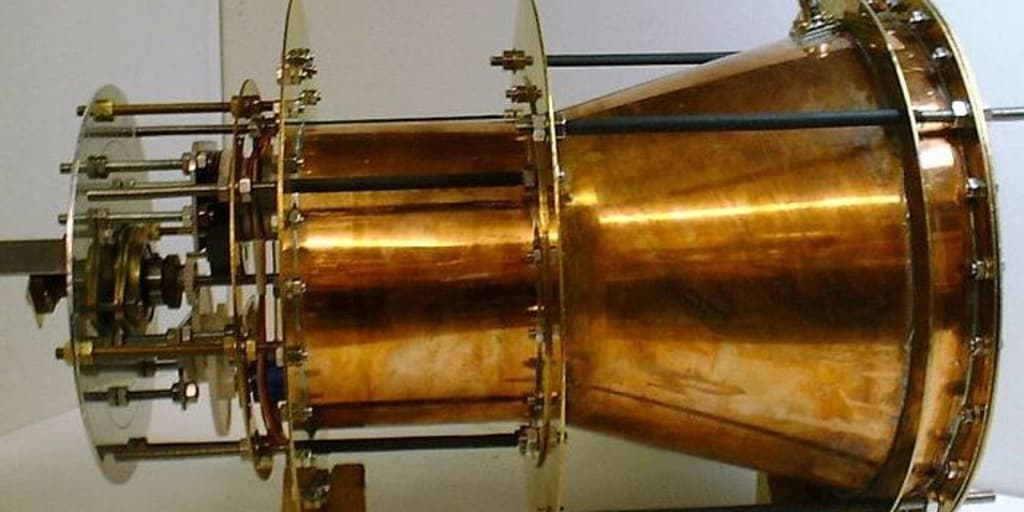They announce an engine that can defy gravity thanks to new physical strength.

A former NASA engineer surprises everyone with an idea that, if true, would be revolutionary: a propulsion engine… without a propeller. A device that by itself would be capable of generating enough thrust to overcome Earth’s gravity and make any type of ship fly. Something that, according to known physics, should not happen.
His name is Charles Buehler, and during his time at NASA he worked on a variety of programs, most of which were related to the development of new engines. Moving beyond the agency, he co-founded Exodus Propulsion Technologies, which filed a patent in 2019 for a system capable of generating force using “asymmetrical electrostatic pressure.” According to the patent, the system generates a voltage difference across an electrically conductive surface.
“The applied voltage difference,” the patent says, “creates an electric field, which results in an electrostatic pressure force acting on at least one of the surfaces of the object. An asymmetry in the resulting electrostatic pressure force vectors results in a net electrostatic pressure force acting on the object. The text adds that the invention can be used as fuel for spacecraft.
There is no alternative explanation
According to Buhler, whose team searched in vain for alternative explanations for the resulting force, their new engine was able to generate a force large enough for a small object to overcome Earth’s gravity (that is, enough thrust to lift the object). Earth). This may seem like a small thing, but in the almost complete vacuum of space, a small push is enough to accelerate, and if it were possible, for example, to maintain a constant acceleration of 1G (equivalent to Earth’s gravity), it would not only be possible to enjoy a pleasant artificial gravity equivalent to our gravity planet, but also to travel long distances during human life. Something that is absolutely unattainable using traditional methods and fuel.
If it is proven beyond any doubt that the Bühler engine actually works and that the thrust it produces is not the result of some other process that the team did not take into account, the impact of the new fuel will indeed be enormous. But that is not all. In fact, during testing, the researchers claim to have discovered a result that is, if possible, even more puzzling: sometimes during testing, the device was able to maintain traction without the need for constant electrical input.
Engine of the future?
“The most important message to convey,” Buehler told The Debrief, “is that we are facing an important discovery. This discovery of the New Force is of fundamental importance because only electric fields can generate a sustained force on an object and cause the center of mass of said object to move without displacing the mass.”
Of course, there is no shortage of reasons to be skeptical of such claims. And this is not the first time that someone has claimed that a device, as in the case of the so-called “EmDrive”, can create thrust without fuel. This was a highly controversial claim at the time, and other teams attempting to reproduce the mysterious thrust produced by this fuel found that it could all be explained by ordinary physics and simple thermal effects.
However, if it were eventually proven that the force underlying the Exodus propeller was indeed the result of asymmetrical electrostatic pressure (and not some other force not taken into account by the engineers) and, above all, if it were proven that the engine could operate on a scale beyond what has already been tested, we will be faced with something that will undoubtedly revolutionize spaceflight.
“There are laws, including the law of conservation of energy,” adds Bühler, “but if applied correctly, forces can be generated that mankind has never seen before. And this will be the force we use to move objects for the next 1000 years… until the next thing happens.
Bühler invites other scientists to test his results and help him understand the underlying physics. In the meantime, without losing hope, it may be best to continue to maintain a healthy skepticism.
